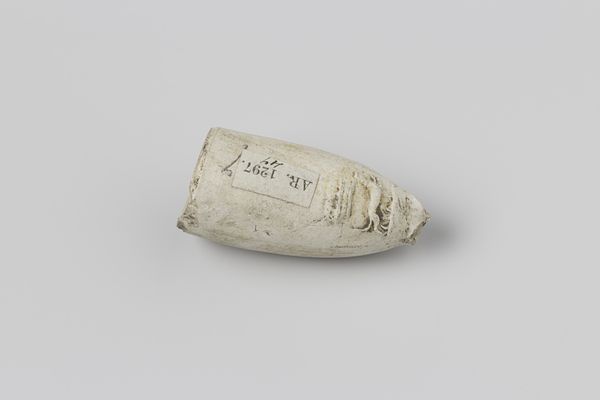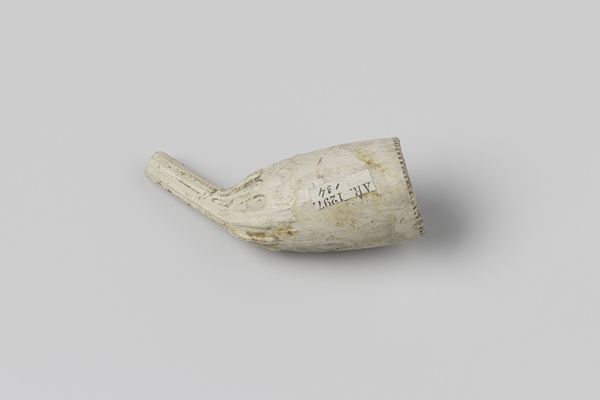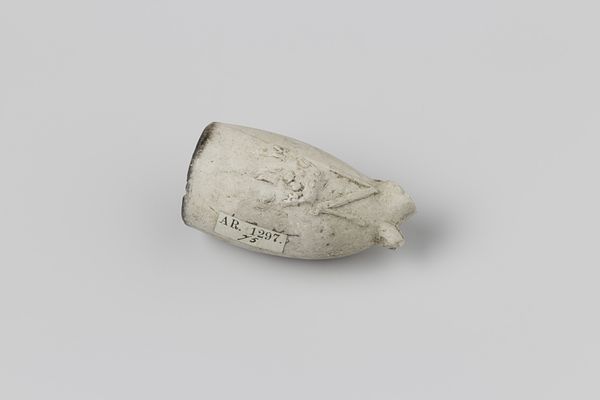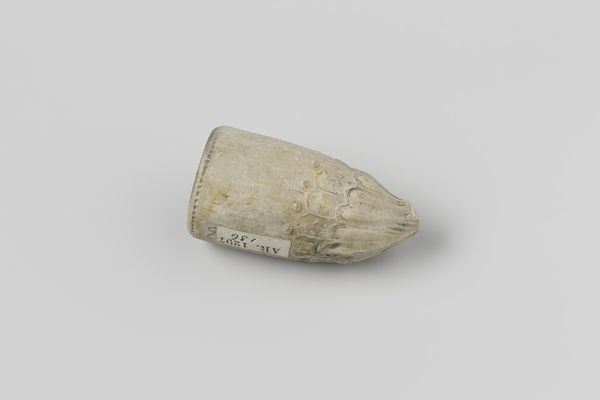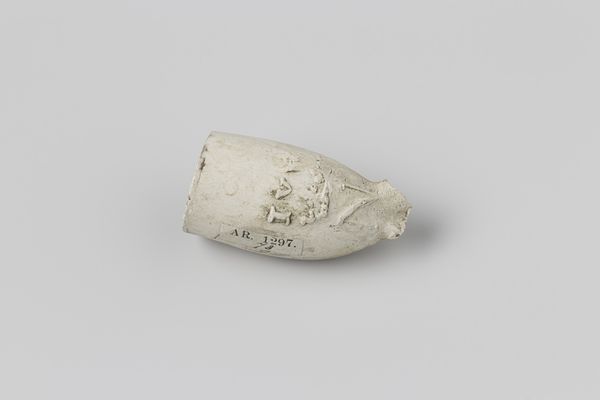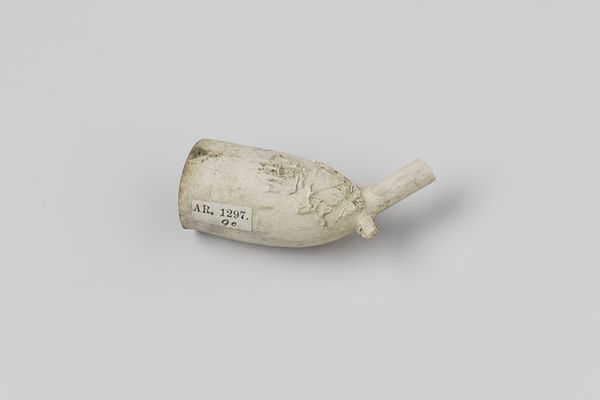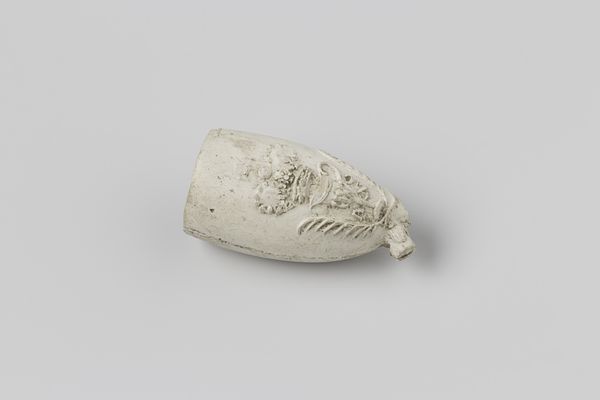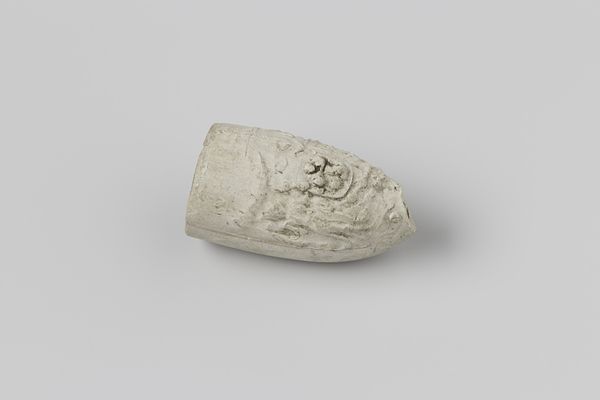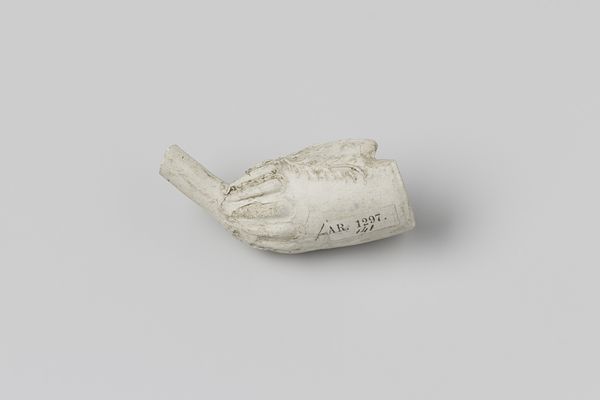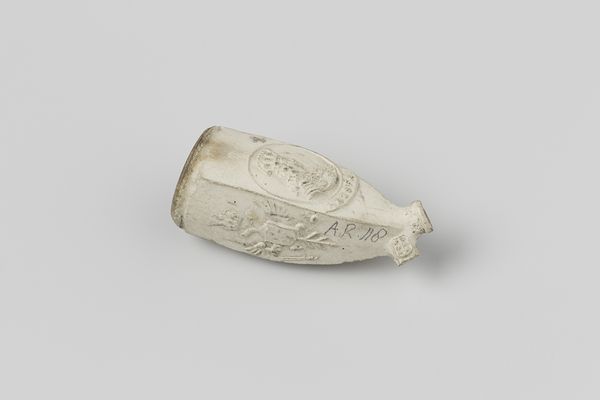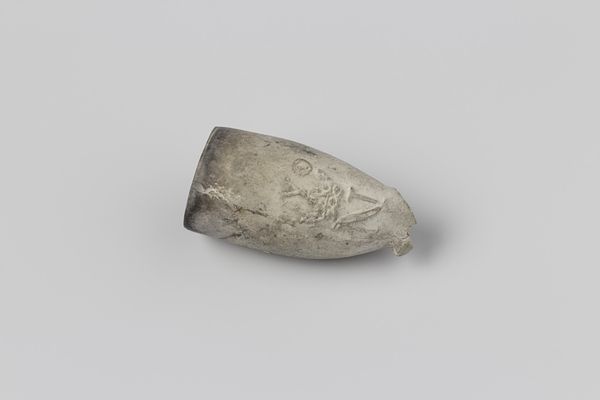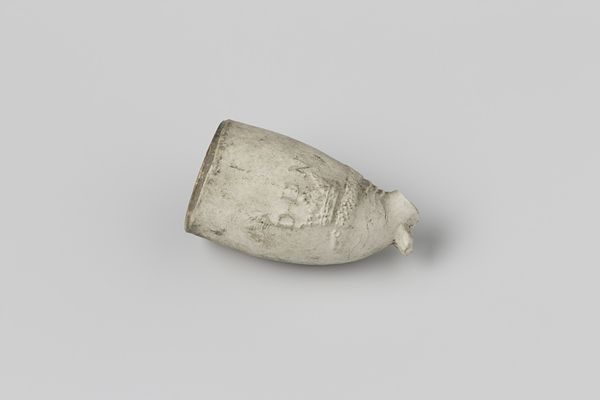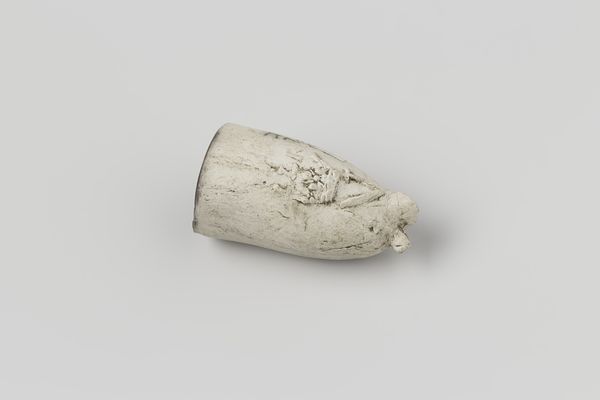
ceramic, earthenware
#
ceramic
#
earthenware
Dimensions: length 3.9 cm, width 2.0 cm
Copyright: Rijks Museum: Open Domain
Curator: There’s a wistful silence in this object. It's a fragment, simply titled "Pijpenkop" – that's Dutch for "pipe head." Made of earthenware, this ceramic shard by Machiel Andriesz van Oosterhout dates back to between 1740 and 1760. Editor: A piece of a life interrupted, literally. The off-white color makes it feel ghostly, and the rough texture speaks of time and handling. I’m already imagining who might have held this, puffed away on this pipe. What stories were spun through the smoke? Curator: Pipes in the 18th century were incredibly personal objects. This fragment speaks to a culture where smoking was commonplace across social classes – from the merchant to the manual labourer. Think about the symbolism itself; fire, smoke, ephemeral pleasures. Editor: That's exactly where my mind went! It reminds me of vanitas paintings— a tangible reminder of mortality. Smoking and pipes also signify community and sharing— perhaps even communion, or a silent shared presence, which must've offered a meditative element in those days, a slower pace than our current age. Curator: And it’s not just about smoking itself. These clay pipes were often elaborately decorated, becoming small-scale storytelling devices with symbols woven into their design – mythological scenes, political commentary, popular fables, things we’ve now lost by having only a shard. But what can we still unravel in this tiny little fragment? Editor: Hmmm. The ceramic looks almost like bone, suggesting some kind of organic transformation… ashes to ashes, dust to earthenware. What’s more striking is its fragmentation, hinting to a loss of control, the inability of maintaining continuity and the everpresent reminders of endings. It transforms mundane object into symbolic artefact— one that reflects on temporality, impermanence, history and its residues. Curator: It certainly has much to tell, doesn't it? It’s both incredibly humble and, as you noted, resonant. To think of all this history packed into one fragment, all this imagery in one small curve… remarkable. Editor: It shows the transformative power that objects hold in memory. By looking at this single item we glimpse at a world long past, filled with intimate histories embedded in clay and smoke. A whole world is here!
Comments
No comments
Be the first to comment and join the conversation on the ultimate creative platform.
